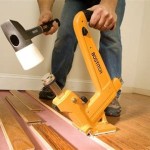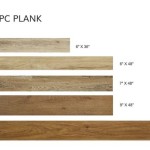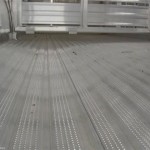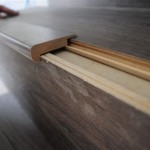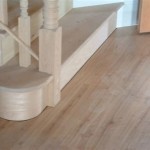Burnt Hardwood Flooring: Causes, Consequences, and Mitigation
Burnt hardwood flooring presents a significant problem for homeowners and property managers, ranging from minor aesthetic blemishes to severe structural compromises. Understanding the causes of this damage, the potential consequences, and the available mitigation strategies is crucial for preserving the integrity and value of hardwood floors. The following article will examine these aspects in detail, shedding light on the complexities associated with burnt hardwood flooring.
Hardwood floors are prized for their durability, aesthetic appeal, and ability to increase property value. Constructed from a variety of wood species such as oak, maple, and cherry, they offer a warmth and natural beauty that other flooring materials often lack. However, the organic nature of wood makes it susceptible to damage from heat and combustion. When exposed to high temperatures or direct flame, hardwood flooring can undergo chemical changes that result in charring, discoloration, and structural weakening.
Identifying the Causes of Burnt Hardwood Flooring
The occurrence of burnt hardwood flooring is rarely spontaneous; there is almost always an identifiable cause. Understanding the potential sources of ignition or heat exposure is the first step in preventing future incidents. Several common culprits contribute to this problem. These include:
Accidental Fires and Flames: These are perhaps the most obvious cause. A house fire, even a small one contained to a single room, can result in extensive burning of hardwood floors. Flames directly contacting the wood surface rapidly lead to combustion and charring. Moreover, even if the flames are extinguished quickly, the residual heat can penetrate the wood, causing further damage over time. This damage extends beyond the visible surface, affecting the structural integrity of the flooring and potentially creating a fire hazard in the future.
Malfunctioning Electrical Appliances: Faulty wiring, short circuits, and overloaded electrical circuits are common causes of fires within a home. Appliances such as space heaters, irons, and electrical outlets located near or on hardwood floors pose a significant risk. If an appliance malfunctions and overheats, it can ignite nearby flammable materials, including the hardwood flooring. This scenario is particularly dangerous because it can occur without warning and potentially spread rapidly if not detected promptly.
Improper Use of Heating Devices: Space heaters, fireplaces, and wood-burning stoves are often used to supplement central heating systems. However, improper use of these devices can lead to burnt hardwood flooring. For example, placing a space heater too close to the floor can cause localized overheating and charring. Similarly, sparks or embers escaping from a fireplace or wood-burning stove can ignite the surrounding flooring. Failing to use proper safety measures, such as fire screens and heat-resistant mats, significantly increases the risk of fire damage.
Chemical Reactions and Spontaneous Combustion: While less common than fire-related causes, certain chemical reactions can generate enough heat to ignite hardwood flooring. This is particularly relevant when dealing with oil-based finishes, stains, and cleaning products. Improper storage, disposal, or mixing of these substances can lead to spontaneous combustion. Rags soaked in oil-based products, for instance, can generate heat as they dry, potentially reaching a temperature high enough to ignite themselves and nearby materials, including the hardwood floor. This risk is amplified in poorly ventilated areas.
Smoking-Related Accidents: Carelessly discarded cigarettes, cigars, or pipe tobacco are a frequent cause of accidental fires and burnt flooring. Embers from these smoking materials can easily ignite flammable materials such as carpets, rugs, and, of course, hardwood floors. The smoldering nature of these embers can allow a fire to develop slowly, often undetected until it has grown to a significant size.
Consequences of Burnt Hardwood Flooring
The consequences of burnt hardwood flooring extend beyond mere aesthetic concerns. While the unsightly appearance of charring and discoloration is undoubtedly a significant drawback, the damage can compromise the structural integrity of the floor and create potential health hazards. Understanding the full range of consequences is crucial for making informed decisions about repair or replacement.
Structural Weakening: When hardwood flooring is subjected to high heat or direct flame, the wood fibers undergo significant changes. Lignin, the polymer that provides rigidity to the wood, breaks down, leading to a loss of strength and stiffness. This structural weakening can compromise the floor's ability to support weight, increasing the risk of sagging, cracking, and even collapse. In cases of severe burning, the flooring may become brittle and crumble under pressure. This is particularly concerning in areas with high foot traffic or where heavy furniture is placed.
Aesthetic Damage: The most immediate and noticeable consequence of burnt hardwood flooring is aesthetic damage. Charring and discoloration can significantly detract from the overall appearance of the room. Even minor burns can create unsightly blemishes that are difficult to conceal. The extent of the damage can vary depending on the severity of the fire and the type of wood used. In some cases, the finish may be the only surface affected, while in others, the wood itself is deeply charred. This damage can be particularly problematic in homes with an open floor plan, where the flooring is highly visible.
Odor and Air Quality Issues: Burnt wood emits a persistent and unpleasant odor that can permeate the entire home. This odor is difficult to eliminate and can linger for weeks or even months after the fire. In addition to the unpleasant smell, burning wood releases a variety of harmful chemicals and particulate matter into the air. These pollutants can irritate the respiratory system, causing coughing, wheezing, and shortness of breath. Individuals with asthma or other respiratory conditions are particularly vulnerable to these effects. Furthermore, the presence of soot and ash can further degrade indoor air quality.
Increased Fire Risk: Burnt wood is more susceptible to ignition than undamaged wood. The charring process creates a layer of carbonized material that is readily flammable. This means that a previously burnt area of flooring is more likely to ignite if exposed to even a small heat source. This increased fire risk poses a significant danger to the occupants of the home and can exacerbate the damage in the event of a subsequent fire.
Property Value Reduction: Burnt hardwood flooring can significantly reduce the value of a property. The visible damage, structural weakening, and potential health hazards can deter potential buyers and lower the appraised value of the home. Even if the damage is repaired, the history of fire damage may still raise concerns among potential buyers. Disclosing the fire damage is generally required by law in many jurisdictions, which can further impact the property's marketability.
Mitigation Strategies for Burnt Hardwood Flooring
Addressing burnt hardwood flooring requires a comprehensive approach that considers the extent of the damage, the underlying cause, and the potential health and safety risks. The appropriate mitigation strategy will vary depending on the severity of the burning and the specific circumstances. The following are common strategies used to address this issue:
Assessment and Evaluation: The first step in mitigating burnt hardwood flooring is to conduct a thorough assessment of the damage. This involves determining the extent of the burning, identifying the cause of the fire, and evaluating the structural integrity of the floor. A professional inspection is highly recommended to ensure that all potential hazards are identified and addressed. The assessment should also include an evaluation of indoor air quality to determine the presence of harmful pollutants.
Cleaning and Deodorization: For minor surface burns, cleaning and deodorization may be sufficient to restore the flooring to an acceptable condition. This involves removing soot, ash, and other debris from the surface of the wood. Specialized cleaning products designed for fire damage restoration can be used to neutralize odors and remove stubborn stains. In some cases, professional cleaning services may be required to effectively remove all traces of smoke and odor.
Sanding and Refinishing: If the burn damage is more extensive but does not penetrate deep into the wood, sanding and refinishing may be an option. This involves removing the damaged surface layer of the flooring by sanding it down to bare wood. The floor is then refinished with a new coat of stain and sealant to protect the underlying wood and restore its appearance. This method is effective for removing surface charring and discoloration, but it is not suitable for heavily damaged areas.
Partial Replacement: In cases where only a portion of the flooring is damaged, partial replacement may be a viable solution. This involves removing the burnt sections of flooring and replacing them with new hardwood planks that match the existing floor. This approach can be more cost-effective than replacing the entire floor, but it requires careful matching of the wood species, grain pattern, and finish to ensure a seamless transition. A skilled flooring contractor is essential for achieving a satisfactory result.
Full Replacement: For severe burn damage that compromises the structural integrity of the flooring or affects a large area, full replacement may be the only option. This involves removing the entire floor and installing a new hardwood floor. While this is the most expensive option, it ensures that the floor is structurally sound and free from any residual fire damage. When choosing a replacement flooring material, it is important to consider the fire resistance of the wood species and the type of finish used.
Preventive Measures: After addressing the immediate damage, it is important to take preventive measures to reduce the risk of future fires. This includes ensuring that all electrical appliances are in good working order, using heating devices safely and responsibly, storing flammable materials properly, and practicing safe smoking habits. Installing smoke detectors and fire extinguishers can also help to detect and suppress fires quickly before they cause extensive damage.
Addressing burnt hardwood flooring requires careful consideration of the cause, the extent of the damage, and the potential consequences. A thorough assessment, appropriate mitigation strategies, and preventive measures are essential for restoring the flooring and protecting the safety and well-being of the occupants.

Playing With Fire What I Ve Learned Creating Shou Sugi Ban Wood Flooring Floor Business

Plywood Sheet Flooring Bob Schoenfelder Burned Floor Featured On Remodelaholic Burnt Diy

Torched Plywood Floors Diy Wood Flooring Floor Design

Broadleaf Brushed Burned Oak Flooring

25 Gorgeous Burnt Wood Floors Design Idea For Amazing Home Freshouz Architecture Decor Floor Diy

Wood Floor Mystery 7 The Case Of Burned Part 1 Business

Tumbled Rustic Burnt Oak Parquet Flooring Blocks Natro Finish Size 16x70x280mm Suppliers Ltd

Discount Mullican Claine 5 Hickory Burnt Umber Hardwood Flooring M20240 By Hurst Hardwoods

How Do I Repair Burn Marks On My Hardwood Floor Hometalk
Exactly How We Diy D Our Wood Floors The Vintage Round Top
Related Posts

